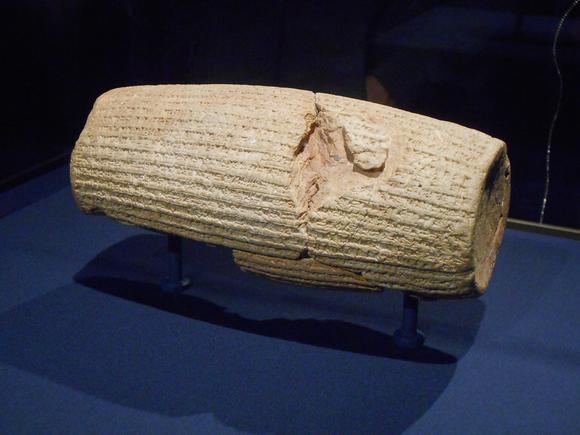By Thomas Finley and Kenneth Way
One of the more fascinating finds from the ancient Near East is the Cyrus Cylinder. Cyrus II, or Cyrus the Great, king of ancient Persia (559–530 B.C.), is mentioned no less than twenty-three times in the Old Testament. The prophet Isaiah foretold more than a century in advance how Cyrus would accomplish the Lord’s purposes for his people. “(The Lord) who says of Cyrus, ‘He is my shepherd and will accomplish all that I please; he will say of Jerusalem, ‘Let it be rebuilt,’ and of the temple, ‘Let its foundations be laid’” (Isa. 44:28, NIV). Ezra and the Chronicler recorded the fulfillment of that prophecy in 538 B.C. (2 Chron. 36:22–23; Ezra 1:1–2). Cyrus was also the last of the kings under whom Daniel served (Dan. 1:21; 6:28; 10:1).
Interestingly, the Cyrus Cylinder records how Cyrus conquered Babylon and then returned captive peoples to their native land and restored sanctuaries for their gods. The text does not give the exact decree concerning the Jews and Jerusalem as found in 2 Chronicles and Ezra, but it does summarize the content of various such decrees that Cyrus would have made for the peoples that were brought captive to Babylonia. Discovered in 1879 in Iraq (by H. Rassam) and written in Babylonian cuneiform, the Cyrus Cylinder has been housed at the British Museum.
From October 2 to December 8 of this year it will make a visit to The Getty Villa (in Malibu, CA) as part of a tour of the United States. This will be an amazing opportunity to see in person this artifact that gives significant background information for the Bible.
For a short and inexpensive paperback book that gives additional information about Cyrus, his times and his famous cylinder, see Cyrus the Great: An Ancient Iranian King, ed. Touraj Daryaee (Afshar, 2013). For the exhibit catalogue see The Cyrus Cylinder and Ancient Persia by John Curtis (The British Museum, 2013). For additional reference see The Cyrus Cylinder, ed. I Finkel (I.B.Tauris, 2013).
UPDATE: Here is a picture that Ken took recently at the Getty Villa exhibit (without a flash, of course!):

 Biola University
Biola University
.jpg)
.jpg)

